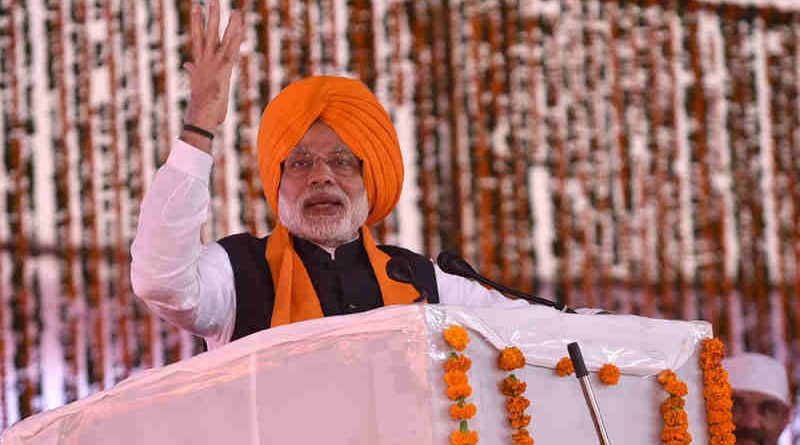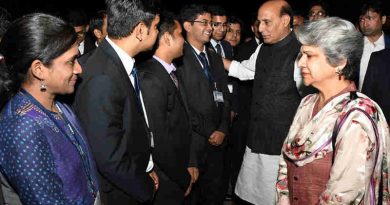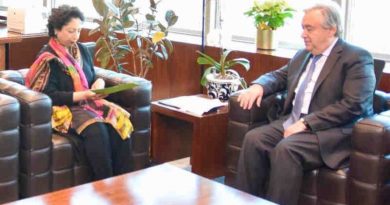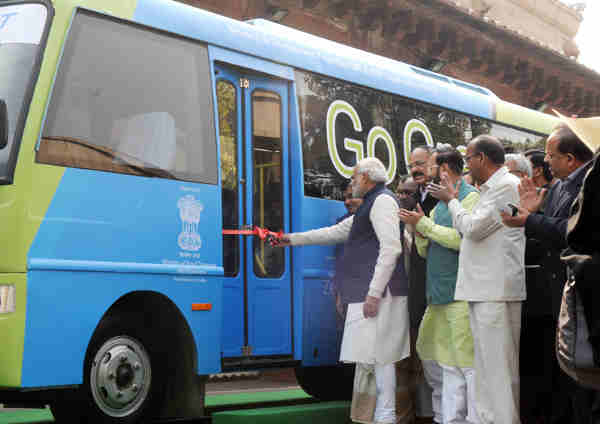Modi Joins Kim Jong-un on RSF List of Press Freedom Predators

According to RSF, India is one of the world’s most dangerous countries for journalists trying to do their job properly.
By RMN News Service
Paris-based organization Reporters Without Borders (RSF) – which works to protect press freedom in all parts of the world – has published a list of 37 heads of state or government who crack down massively on press freedom.
According to RSF, some of these “predators of press freedom” have been operating for more than two decades while others have just joined the blacklist, which for the first time includes two women and a European predator.
India’s authoritarian Prime Minister (PM) Narendra Modi joins the list with other cruel rulers including Saudi Arabia’s crown prince Mohammed bin Salman, Myanmar’s military head Min Aung Hlaing, Russian President Vladimir Putin, Pakistan PM Imran Khan, and North Korea’s Kim Jong-un.
According to RSF, India is one of the world’s most dangerous countries for journalists trying to do their job properly. They are exposed to every kind of attack, including police violence against reporters, ambushes by political activists, and reprisals instigated by criminal groups or corrupt local officials.
Ever since the general elections in the spring of 2019, won overwhelmingly by Modi’s Bharatiya Janata Party (BJP), RSF says pressure has increased on the media to toe the Hindu nationalist government’s line.
Indians who espouse Hindutva, the ideology that gave rise to radical right-wing Hindu nationalism, are trying to purge all manifestations of “anti-national” thought from the public debate. The coordinated hate campaigns waged on social networks against journalists who dare to speak or write about subjects that annoy Hindutva followers are terrifying and include calls for the journalists concerned to be murdered.
According to RSF, the campaigns are particularly violent when the targets are women. Criminal prosecutions are meanwhile often used to gag journalists critical of the authorities, with some prosecutors invoking Section 124a of the penal code, under which “sedition” is punishable by life imprisonment.
In 2020, according to RSF, the Modi government took advantage of the coronavirus crisis to step up its control of news coverage by prosecuting journalists providing information at variance with the official position. The situation is still very worrying in Kashmir, where reporters are often harassed by police and paramilitaries and must cope with utterly Orwellian content regulations, and where media outlets are liable to be closed.
Nearly half (17) of the predators are making their first appearance on the 2021 list, which RSF is publishing five years after the last one, from 2016. All are heads of state or government who trample on press freedom by creating a censorship apparatus, jailing journalists arbitrarily or inciting violence against them, when they don’t have blood on their hands because they have directly or indirectly pushed for journalists to be murdered.
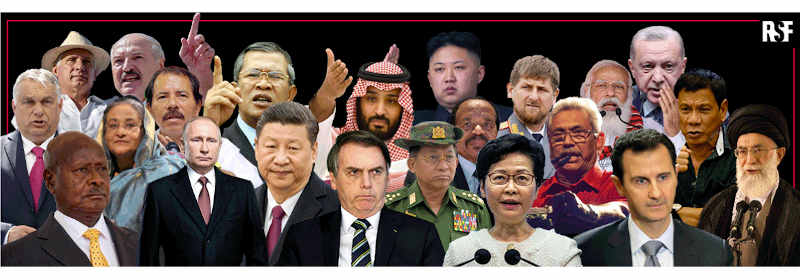
Nineteen of these predators rule countries that are coloured red on the RSF’s press freedom map, meaning their situation is classified as “bad” for journalism, and 16 rule countries coloured black, meaning the situation is “very bad.” The average age of the predators is 66. More than a third (13) of these tyrants come from the Asia-Pacific region.
“There are now 37 leaders from around the world in RSF’s predators of press freedom gallery and no one could say this list is exhaustive,” RSF secretary-general Christophe Deloire said. “Each of these predators has their own style. Some impose a reign of terror by issuing irrational and paranoid orders. Others adopt a carefully constructed strategy based on draconian laws. A major challenge now is for these predators to pay the highest possible price for their oppressive behaviour. We must not let their methods become the new normal.”
The most notable of the list’s new entrants is Saudi Arabia’s 35-year-old crown prince, Mohammed bin Salman, who is the center of all power in his hands and heads a monarchy that tolerates no press freedom. His repressive methods include spying and threats that have sometimes led to abduction, torture and other unthinkable acts. Jamal Khashoggi’s horrific murder exposed a predatory method that is simply barbaric.
The new entrants also include predators of a very different nature such as Brazilian President Jair Bolsonaro, whose aggressive and crude rhetoric about the media has reached new heights since the start of the pandemic, and a European prime minister, Hungary’s Viktor Orbán, the self-proclaimed champion of “illiberal democracy” who has steadily and effectively undermined media pluralism and independence since being returned to power in 2010.
The first two women predators are both from Asia. One is Carrie Lam, who heads a government that was still democratic when she took over. The chief executive of the Hong Kong Special Administrative Region since 2017, Lam has proved to be the puppet of Chinese President Xi Jinping, and now openly supports his predatory policies towards the media. They led to the closure of Hong Kong’s leading independent newspaper, Apple Daily, on 24 June and the jailing of its founder, Jimmy Lai, a 2020 RSF Press Freedom laureate.
The other woman predator is Sheikh Hasina, Bangladesh’s prime minister since 2009 and the daughter of the country’s independence hero. Her predatory exploits include the adoption of a digital security law in 2018 that has led to more than 70 journalists and bloggers being prosecuted.
Some of the predators have been on this list since RSF began compiling it 20 years ago. Syria’s President Bashar al-Assad and Ali Khamenei, the Supreme Leader of Iran’s Islamic Revolution, were on the very first list, as were two leaders from the Eastern Europe and Central Asia region, Russia’s Vladimir Putin and Belarus’s Alexander Lukashenko, whose recent predatory inventiveness has won him even more notoriety. In all, seven of the 37 leaders on the latest list have retained their places since the first list RSF published in 2001.
Three of the historic predators are from Africa, the region where they reign longest. Teodoro Obiang Nguema Mbasogo, 79, has been Equatorial Guinea’s president since 1979, while Isaias Afwerki, whose country is ranked last in the 2021 World Press Freedom Index, has been Eritrea’s president since 1993. Paul Kagame, who was appointed Rwanda’s vice-president in 1994 before taking over as president in 2000, will be able to continue ruling until 2034.
For each of the predators, RSF has compiled a file identifying their “predatory method,” how they censor and persecute journalists, and their “favourite targets” – the kinds of journalists and media outlets they go after.
The file also includes quotations from speeches or interviews in which they “justify” their predatory behaviour, and their country’s ranking in the World Press Freedom Index. RSF published its 2021 “Press freedom predators” gallery on July 5.
💛 Support Independent Journalism
If you find RMN News useful, please consider supporting us.

